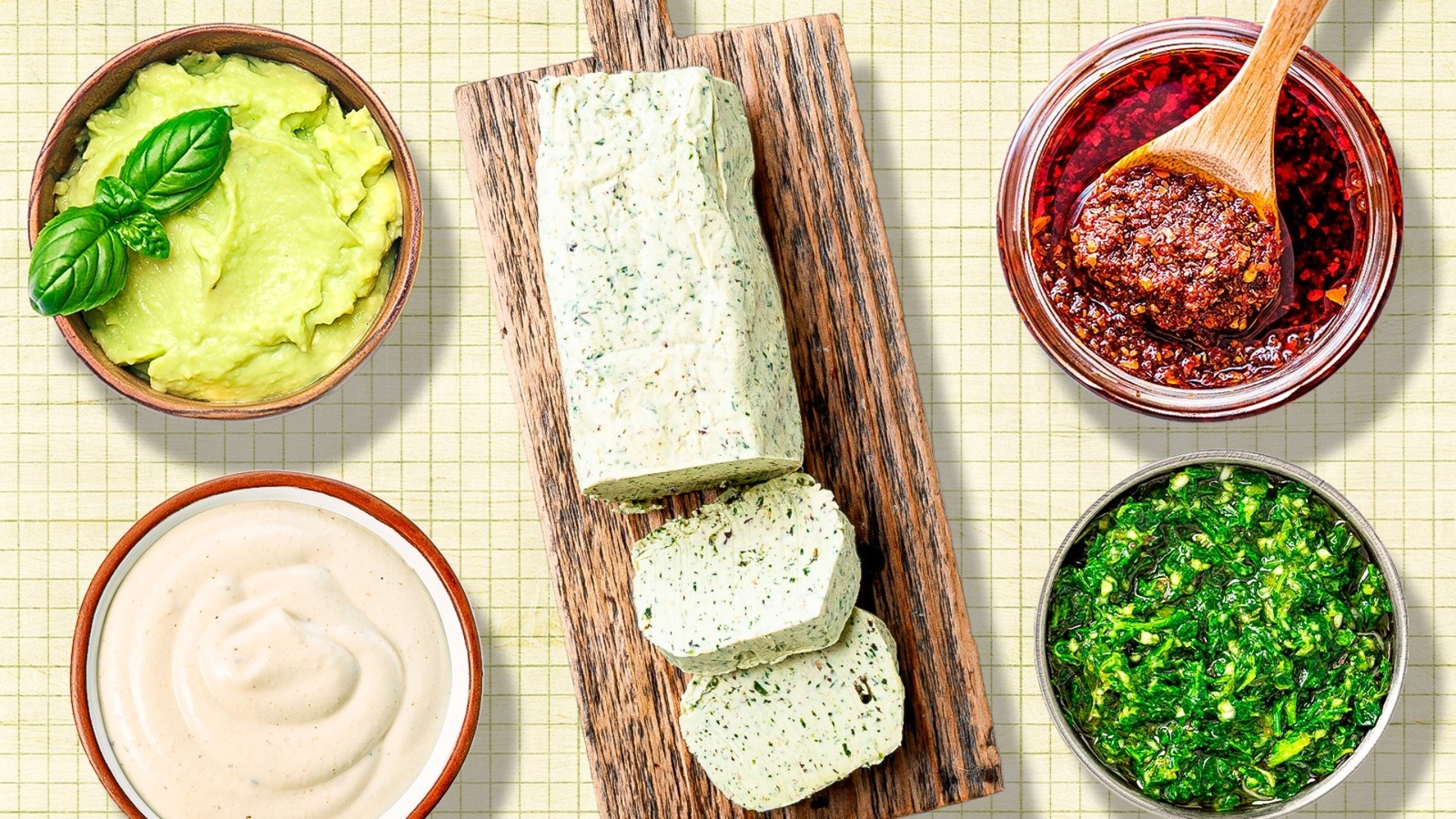Surveying the jam-packed supermarket shelves brimming with an array of sauces, spreads, and seasonings, it’s natural to wonder: What is a condiment, really? There’s no set definition, but generally a condiment is a flavor-boosting substance; an inessential-but-welcome last-minute addition to a meal, capable of taking it to the next level.
Now, here’s the real question: Why bother with store-bought condiments at all, when homemade condiments provide so much more potential? Some, like chutney and relish, are a great way for home cooks to use up leftover produce. Others, like mustard and teriyaki sauce, require minimal ingredients. Still others, like compound butter, have the wow factor that can transform a condiment into an excellent gift. Homemade sauerkraut offers health benefits that its canned counterparts can’t match, while guacamole and salsa always taste better when they’re freshly made.
Most homemade condiments are made with inexpensive ingredients, and are fairly easy to prepare. Culinary enthusiasts will enjoy experimenting with flavors and textures, while health-conscious eaters will be relieved to cut out artificial flavors and preservatives. So whether you’re seeking a clean ingredient list, customized flavor, or reduced cost, making condiments from scratch is the way to go, starting with these suggestions.
Mayonnaise and vegan mayonnaise
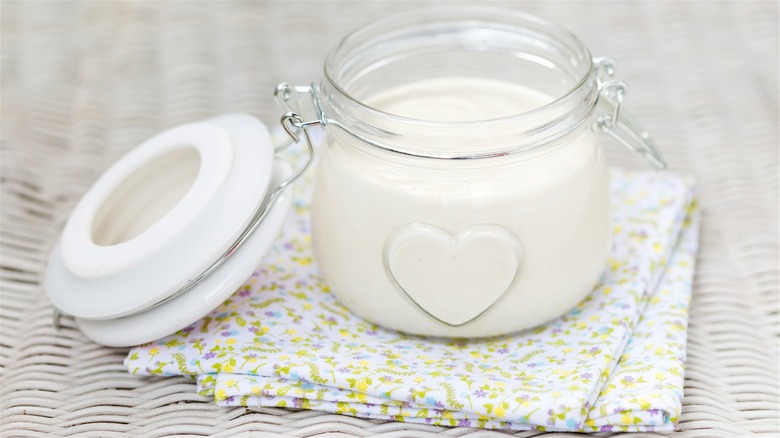
America loves its mayonnaise. A Statista report states that mayonnaise is the country’s most-sold condiment, with sales reaching $164 million in 2021. Mayonnaise is affordable and ubiquitous, and grabbing a jar at the store is almost a reflex for many. But what if we told you that it’s nearly as effortless to make your own? Your classic mayonnaise recipe only requires whisking egg yolks with mustard and salt, before adding lemon juice, vinegar, oil, and sugar. Done!
However, if you’re health-conscious, allergic to eggs, or don’t eat animal-based products, just one swap will turn homemade mayo vegan. Replacing egg yolk with tofu, aquafaba, or soy milk takes both cholesterol and the health risks of raw eggs out of the equation. The best part is that vegan and regular mayonnaise are actually quite similar. They can be hard to differentiate by looks alone, their ingredients are nearly identical, and the preparation process is similar — both varieties can be whipped up in mere minutes.
Compound butter
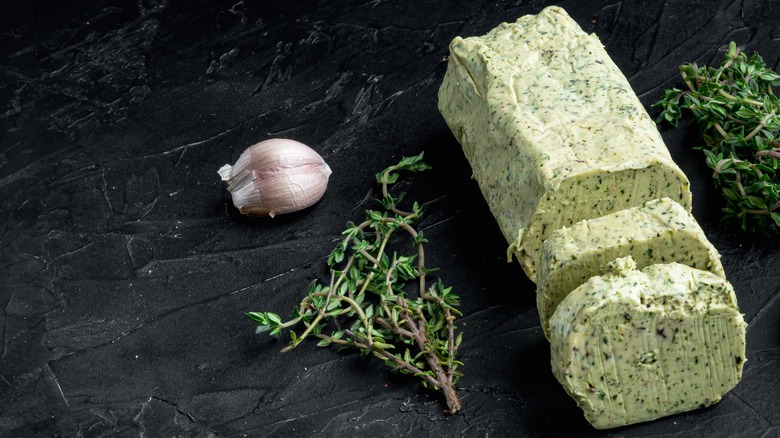
If you’re over TikTok’s butter board trend but would still like to impress your brunch guests, compound butter might be a solution for you. It looks and sounds fancy, but it’s not complicated to make. Depending on the ingredients you use, it may or may not be cheaper than store-bought gourmet butters, but making it from scratch allows you to experiment more with add-ins, adjust it to your dietary preferences, and use up whatever you have on hand to complement a meal’s flavors.
The simple method for making compound butter involves whipping room-temperature butter together with aromatics in a food processor. Otherwise, you could whip it by hand or with a stand mixer first, then add flavorings. Next, scrape the butter onto plastic wrap and form a log. Seal it tightly, refrigerate the log until solid, and enjoy. Once you get familiar with the process, you can make many amazing flavored butters, from salted caramel to jalapeño lime; the sky’s the limit when it comes to compound butter add-ins.
Chili oil and chili crisp
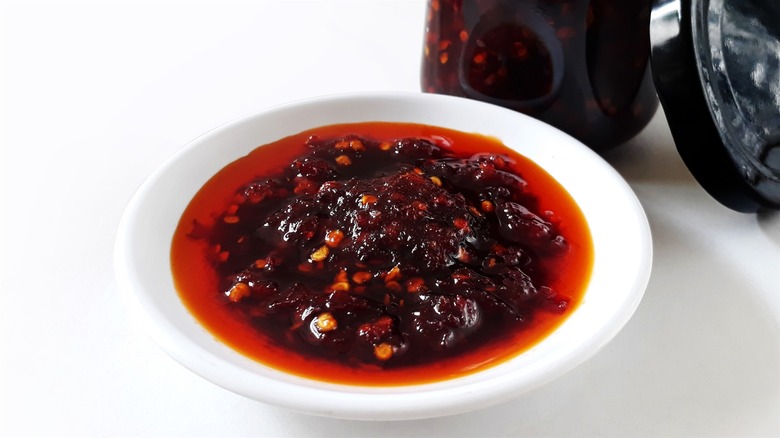
A great condiment can transform even the simplest meal into something exciting. This is particularly true for chili oil and its close relative, chili crisp: both can do the heavy lifting in plain vegetable bowls, both elevate dipping sauces, and both can provide the spicy kick your smashed potatoes need. These are just a few examples, but heat lovers already know the value of chili oil and chili crisp. If you’re one of those people, consider making your own — it’s easy, and gives you complete control over the flavor.
Making chili oil can be as simple as pouring hot oil over a mix of spices, bringing it to room temperature, and storing it in an airtight container. The spice mix often includes chili flakes, Chinese five spice powder, sesame seeds, and palate-vibrating Sichuan peppers. More experienced cooks can infuse the oil with star anise, cinnamon sticks, and bay leaves before straining it over chili flakes. Meanwhile, a typical chili crisp recipe calls for sautéing shallots in oil first, then blending the mixture with toasted sesame seeds, dried alliums, red pepper flakes, paprika, and salt.
Guacamole
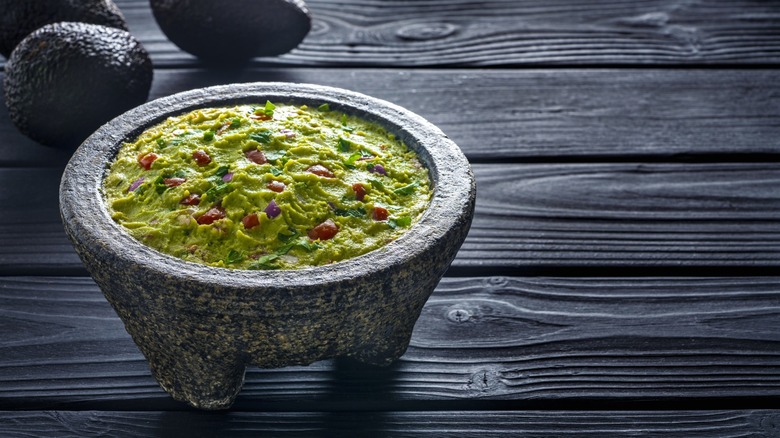
Mediterranean/Getty Images
Sure, you could buy guacamole, but where’s the fun in that? Making it at home allows you to customize it to your liking — extra lime, more heat, or maybe a generous handful of cilantro. Plus, when you make it yourself, you know exactly what’s going into it, with no mystery additives or preservatives. If you have access to inexpensive avocados, this could even be a budget-friendly way to regularly embrace this addictive condiment.
Ready to make crave-worthy guacamole? Peel and pit the avocados, juice the lime, and finely chop the onions, garlic, tomatoes, and cilantro. Next, mash the avocados to your preferred texture. For guacamole that’s beyond creamy, add a dollop of mayo. Next, add the remaining ingredients, being careful not to over-stir. Season, taste, season again if necessary, and you’re good to go — it’s as easy as that.
However, for a condiment so simple, there are many ways you may be ruining homemade guacamole. But as long as you use fresh, ripe ingredients, chop everything uniformly, taste it before you serve it, and consume it right away, there’s no need to worry.
Chimichurri
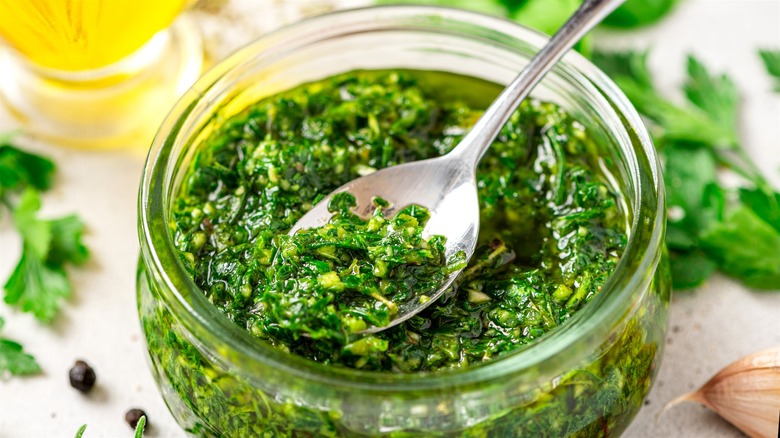
If you’re a fan of South American barbecue, you must be familiar with its tangy, spicy accompaniment, chimichurri. This loose oil-based condiment might look like pesto to the uninitiated, but it has a unique flavor (courtesy of parsley, garlic, oregano, red wine vinegar, and chili pepper if desired) that pairs well with grilled meat. However, by no means should its repertoire be limited to that. Chimichurri doubles as a salad dressing, complements black bean tacos, and adds zest to roasted potatoes with spinach.
Sure, store-bought chimichurri might be more convenient, but the control and satisfaction of making your own? That’s something money can’t buy. And let’s be real — not every store-bought product guarantees authentic flavor and texture. The easy way to make chimichurri is to blend everything in a food processor, let it sit for a couple of hours, and serve.
If you really want to do it right, chop the ingredients by hand to preserve their textures. Then mix them with oil and let the flavors marinate at room temperature overnight before refrigerating. There will be some discoloration, but chimichurri’s flavor gets better with age.
Mustard
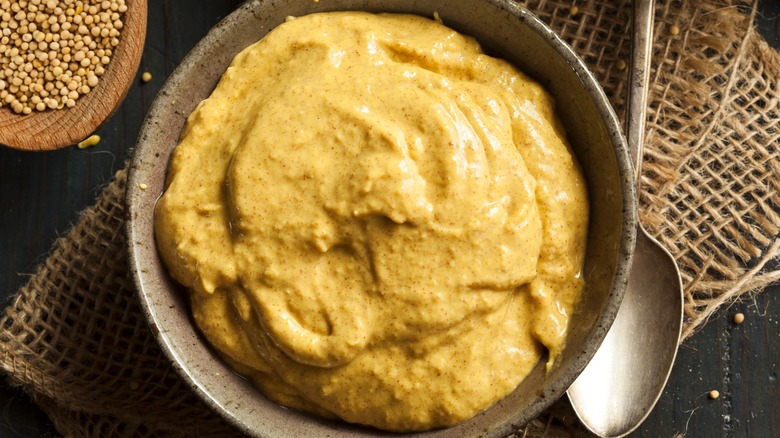
Some things are so easy to make from scratch that once you get into the habit, you’ll look back and wonder why you ever bought it ready-made. Mustard is one of those things. Its basic ingredient list is almost laughably short: mustard seeds and liquid. The seeds can be yellow, brown, or black (yellow being the mildest), and the liquid can range from water to vinegar to beer. With homemade mustard, you can try various combinations depending on your preferences — smooth or coarse, punchy or mellow, sweet or savory. Plus, you’ll fully control how much sodium and sweetener goes into it.
To make mustard, you’ll need to soak the seeds in liquid with a pinch of salt and sugar for one to three days at room temperature, then puree to the desired consistency and mix in additional flavorings. If you try it immediately and start to panic because your homemade mustard doesn’t taste like store-bought, don’t fret — that’s normal! Fresh mustard is always bitter and extra pungent, and needs to age further to mellow. So, refrigerate it for a few weeks first to let the flavors develop properly.
Barbecue sauce
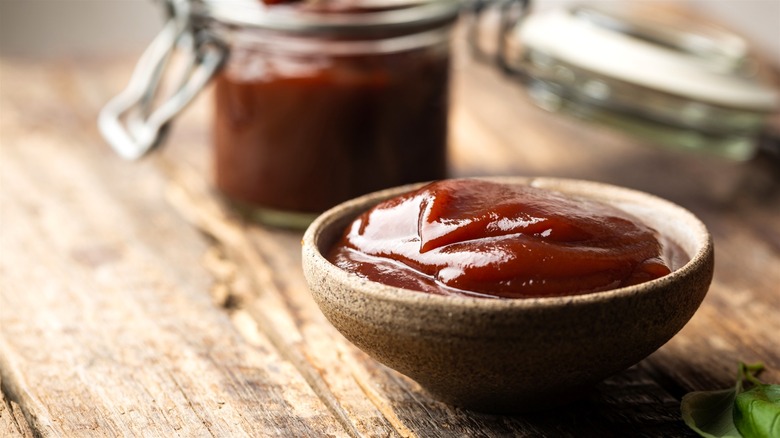
Sweet and smoky, tangy and deeply savory, barbecue sauce is beloved both as a condiment and an ingredient. The convenience of a store-bought bottle seems hard to beat, but it comes at the potential price of high fructose corn syrup, extra sodium, and artificial ingredients, which are all valid reasons why you may want to think twice before buying BBQ sauce. Fortunately, the homemade alternative uses straightforward ingredients that come together quickly, and making it yourself might even be cheaper than buying some commercial varieties.
To make your own barbecue sauce, you need a perfect blend of sweetness (brown sugar or molasses), umami (tomato and Worcestershire sauces), acidity (vinegar or lemon juice), and aromatics (smoked paprika, powdered alliums, black pepper, and mustard). Low-sugar ketchup is best for homemade barbecue sauce, as it doesn’t overpower other ingredients, and apple cider vinegar creates a balanced BBQ sauce that other types of vinegar can’t match. All you’ll need to do is mix all the ingredients in a non-reactive saucepan and simmer it to the desired thickness. It will last for a couple of weeks in the fridge, but we bet you’ll devour it sooner.
Hot sauce
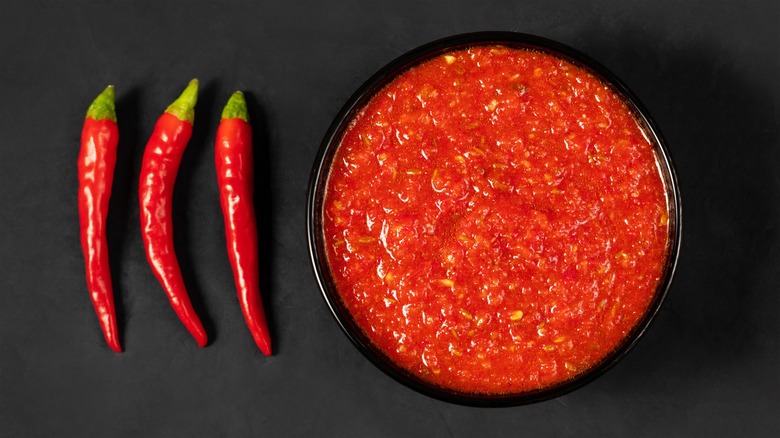
For true hot sauce aficionados, having a drizzle of their favorite condiment with every meal is not a want but a need. And some will stop at nothing to get their fix — when a sriracha shortage swept the nation in recent years, people resorted to stealing bottles of it from restaurants when their beloved hot sauce wasn’t available in stores. (Perhaps the thieves didn’t know how to make homemade sriracha.) This could even be a money-saving choice for anyone growing their own hot peppers. For the rest of us, going homemade is an exciting way to exert control over the heat and try different pepper varieties.
One important thing to remember when making your own hot sauce is safety. No matter which peppers you choose — mild jalapeños, sweet habaneros, or fiery ghost peppers — wear gloves, work in a well-ventilated area, and wash your hands and equipment afterwards. If you’re in a hurry, a quick vinegar-based sauce is your best bet, but if you have the time and patience to let flavors fully develop, go for fermented hot sauce varieties.
Sauerkraut
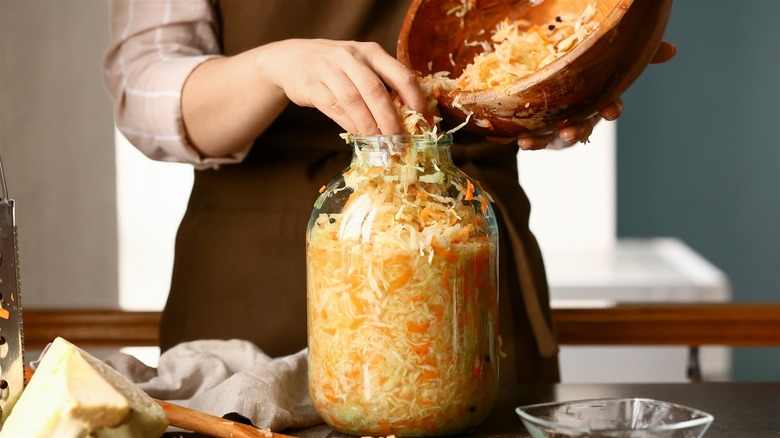
There’s something special about the tangy crunch of sauerkraut. Salads, stews, stir-fries, and sandwiches — this versatile condiment can elevate them all. But why go through the ordeal of chopping all that cabbage and waiting for weeks before it’s ready, if you can just grab a jar at the store?
The key difference between raw and canned sauerkraut is pasteurization. The wonderful probiotics, punchy tang, and refreshing crunch gets lost in the canning process. While it’s possible to buy organic, unpasteurized sauerkraut, making your own is cheap, uncomplicated, and, frankly, exciting.
Here’s how to make sauerkraut: start with your thinly sliced cabbage of choice mixed with 1.5%–2.5% of its weight in salt. Then, it’s left to rest and release juices before being mixed again with flavorings (such as caraway and mustard seeds), pressed down into a jar, submerged in its own brine, and covered loosely. After four to seven days at room temperature, your sauerkraut is ready, but its flavor will continue developing in the fridge. You can also enjoy leftover sauerkraut juice on its own as a gut-friendly shot, a cocktail ingredient, or to use as a starter culture.
Pickled vegetables
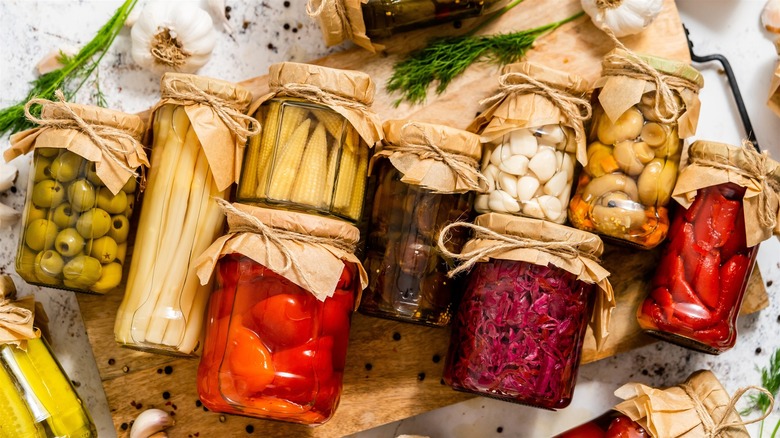
Store-bought pickles may seem like a convenient, cost-effective option — but they can’t hold a candle to the freshness and customized flavors of homemade preserved vegetables. Unlike fermentation, which takes a long time and can end in moldy disaster, the pickling game is a breeze. Once you get into it, the vinegar-preserved vegetables will always be there to lend their tangy crunch to sandwiches and salads. Using top-notch seasonal produce will give you control of the quality and price, and if you skip the canning process, homemade pickles won’t require much effort beyond a drive to the supermarket.
Enter the realm of beginner-friendly refrigerator pickles — no need for heat or sterilization. These babies are ready to rock in just 24 hours, and will keep for a couple of weeks. But you don’t have to stop at cucumbers: red onions, radish slices, and carrot sticks all make wonderful pickled veggies. All you’ll need is to cut up the vegetables and stack them in a clean jar. Then, prepare a brine by boiling vinegar with aromatics, salt, and optional sugar, before pouring it into the jar, cooling it, and refrigerating it overnight.
Salsa
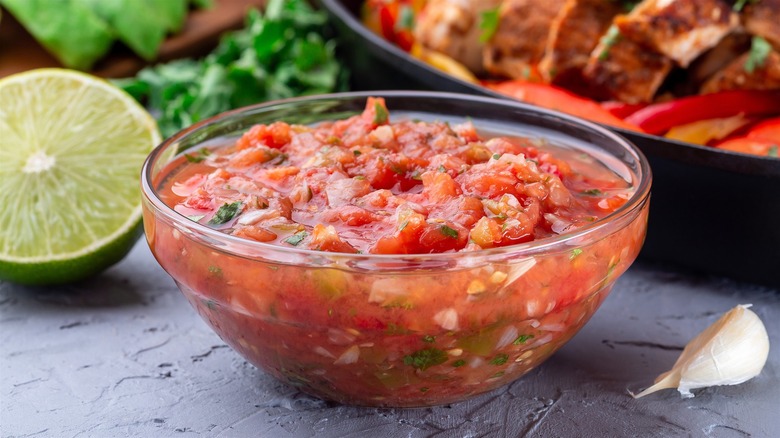
If you find yourself reaching for store-bought salsa instead of making your own, it might just mean you haven’t quite nailed the homemade version — yet. Once you’ve tasted a proper charred tomato salsa or fresh tomatillo salsa verde, you’ll regret every mass-produced jar you’ve ever picked up.
Sure, chopping all the vegetables and aromatics by hand takes effort, and homemade salsa’s shelf life is much shorter. But think of all the pros: you can incorporate ingredients you have on hand, adjust the texture and flavor to your liking, and leave out extra sugar, salt, and preservatives. Depending on the season and your location, homemade salsa can also be cheaper than store-bought varieties. And isn’t it always more satisfying to eat something freshly made, rather than something that’s been sitting at the store for weeks?
Since salsa is a tomato-first condiment, you need to roughly chop these succulent fruits alongside onions, chili peppers, garlic, and onions. Then broil the veggies until lightly charred and pulse them in a food processor with herbs and lime juice. Some fresh salsas, like pico de gallo, don’t even require cooking, just a uniform chop and a thorough mix.
Teriyaki sauce
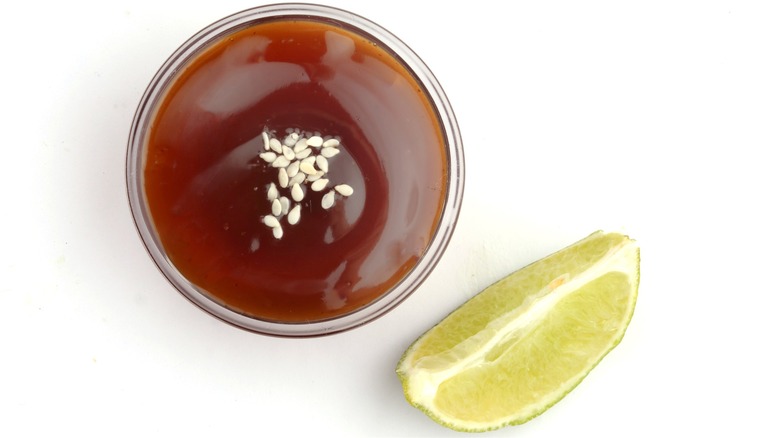
If you’re sick of overly sweet, unnatural-tasting commercial teriyaki sauce, yet can’t imagine your life without its umami-packed sensation, it’s time to switch over to homemade teriyaki and not look back. At its core, teriyaki sauce has a base of just three ingredients: soy sauce, sugar, and rice vinegar or wine (sometimes both). If you’re keen on homemade Japanese fare, all of these players likely already lurk in your pantry — and if not, they’re worth splurging on. Versatile and long-lasting, these ingredients can be useful in everyday cooking.
There is no exact science to homemade condiments, but in the case of Japanese-style teriyaki sauce, you want to use equal amounts of soy sauce, sake, and mirin, while using half of that amount of sugar. Making it is incredibly simple: combine everything in a pot and reduce over medium heat for 15 minutes, or until it turns thick and syrupy. You can boost homemade teriyaki’s flavor by adding fresh ginger and garlic, or cut the sauce’s salt content by replacing soy sauce with coconut aminos, and add extra gloss and body by including a cornstarch slurry in your at-home teriyaki sauce recipe.
Relish
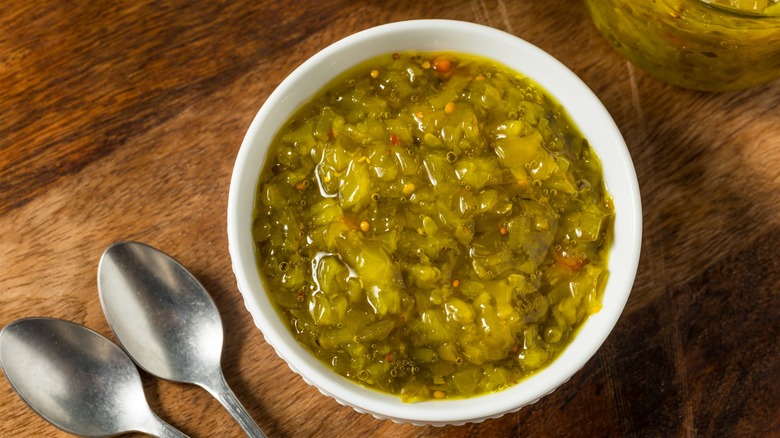
When you find yourself googling the easiest method to boost the texture and flavor of hot dog relish, you know that the tub you just bought is far from perfect. But when you make relish from scratch, you have the power to customize it to your taste preferences, creating a condiment that hits all the right notes for you. Plus, you can adjust the final amount so that it can be enjoyed while still fresh, instead of lurking at the back of your fridge until it ultimately spoils.
The satisfaction of crafting homemade relish — along with its superior, complex flavor and refreshing bite — makes the work a worthy endeavor. A typical relish recipe will call for finely chopped vegetables and fruits, such as cucumbers, onions, bell peppers, and zucchini, or fruits like mango and pineapple. Next, the diced produce is salted, rested, drained of excess liquid, and cooked in a mixture of vinegar, sugar, and spices. The specific combination of ingredients can vary widely, but you’ll almost always end up with a tangy, sweet, and savory condiment with a pleasing crunch.
Cocktail sauce
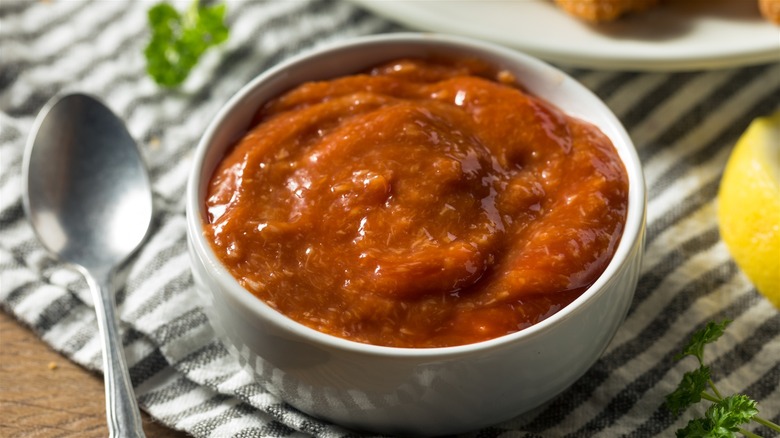
Cocktail sauce is one of those condiments you can whip up any time the craving strikes, since the ingredients you’ll need are likely already in your fridge. Ketchup, horseradish, lemon juice, and Worcestershire sauce form its base, but you can upgrade cocktail sauce with a spicy addition of hot sauce or chili paste, and deepen its flavor with lemon zest and garlic.
All that’s required is mixing everything and letting it rest in the fridge for a bit. Unfortunately, the clash of pectin-rich ketchup and acid-rich horseradish can be the reason why your homemade cocktail sauce ended up too thick. But don’t worry — you can get around this by serving it right away at room temperature, before it gets a chance to gel, or stirring it with a splash of water if the sauce was chilled.
Should you end up with leftover cocktail sauce, use it as the name suggests — by adding it to drinks like a bloody mary. Alternatively, use it as a direct substitute for salad dressing, or incorporate a little into vinaigrette. It will last for a week or two in the fridge, so there’s plenty of time to enjoy it with your favorite dishes.
Chutney
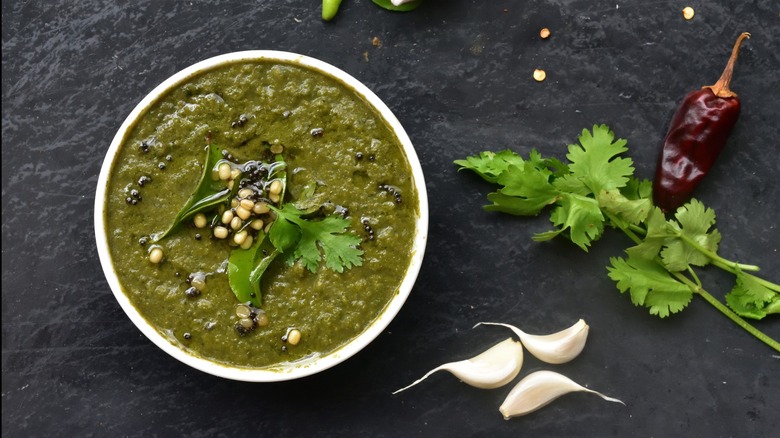
muthugpd/Shutterstock
How does one describe chutney? Is it a relish, a jam, or a sauce? Frankly, it’s a bit of everything. Hailing from India, this robust and versatile condiment brings together fruits and veggies, vinegar, sugar, and a mix of aromatics, resulting in a complex flavor.
When you’re dealing with mass-produced chutneys, especially in Western supermarkets, you’re often getting a watered-down, one-size-fits-all imitation of the real deal. So if you want it to be as authentic as possible, you have to make it yourself.
But even if you’re okay with the Westernized takes, there’s still a case for going homemade. It’s a savvy way to cut food waste: No one will notice that the fruits and veggies you used were slightly past their prime. And let’s not forget the satisfaction of breathing new life into food scraps — consider making chutney with leftover mango peels. Cooking it is a breeze, too — chop, spice, simmer, and you’re in business. And remember: chutneys get better with age, so exercise some self-control and let them mature for a few weeks before savoring.
Static Media owns and operates Look and Mashed.



